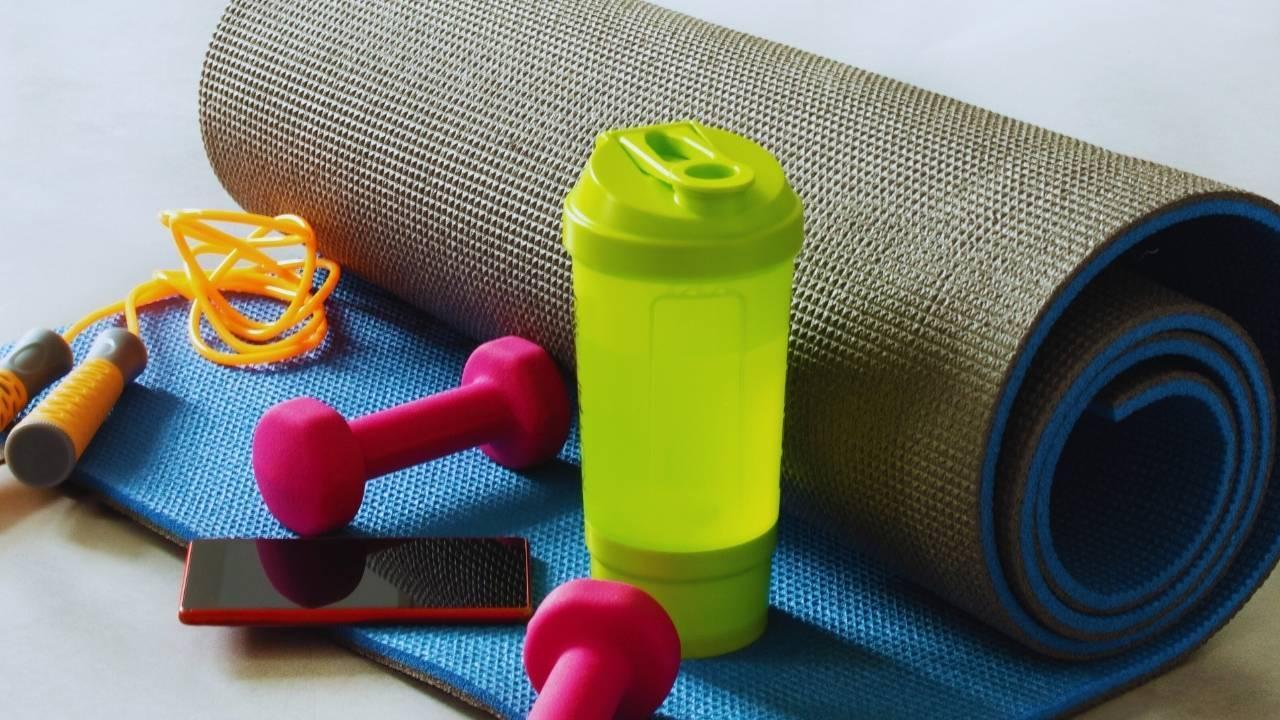
Join 10k+ people to get notified about new posts, news and tips.
Do not worry we don't spam!

Post by : Anish
Fitness is no longer just about hitting the gym for hours or following rigid routines. In 2025, young adults between 15 and 30 are redefining what it means to stay healthy. With packed schedules, academic pressures, career ambitions, and the constant demands of digital life, they need fitness options that are efficient, adaptable, and holistic. The new generation wants more than muscle—they want energy, mental clarity, flexibility, and balance. As a result, the fitness industry has shifted towards practices that save time, integrate technology, and focus on long-term well-being.
Gone are the days when fitness meant spending two hours in the gym. Micro-workouts—short, high-intensity exercises lasting 10 to 20 minutes—have become a global trend. These sessions focus on maximum output in minimal time, making them perfect for young adults with busy routines.
Micro-workouts can include bodyweight movements like squats, push-ups, and planks, combined with high-intensity interval training (HIIT). They are not only time-efficient but also highly effective for improving cardiovascular health and burning calories. Many young professionals now squeeze in these sessions between classes, meetings, or even during lunch breaks.
Wearables and smart apps continue to dominate the fitness landscape in 2025. Fitness watches, rings, and AI-powered apps now track not only steps and calories but also stress levels, sleep cycles, and hydration. For young adults, this real-time feedback helps them stay accountable and make informed decisions.
Virtual reality (VR) and augmented reality (AR) fitness programs are also gaining ground. Instead of running on a treadmill, young people can now jog through a simulated forest or climb virtual mountains. These immersive experiences make exercise more engaging, helping users stick to routines consistently.
Fitness today is not only about building physical strength but also maintaining mental health. Practices like yoga, Pilates, and breathwork are increasingly popular among young adults. These activities help reduce stress, improve flexibility, and strengthen the mind-body connection.
The growing awareness of mental health issues such as anxiety and burnout has led to more interest in mindfulness-based fitness programs. Many apps and studios now combine guided meditation with workouts, allowing individuals to exercise both body and mind in one session.
Young people are increasingly conscious of sustainability, and this extends to their fitness habits. Eco-friendly workout gear, biodegradable yoga mats, and gyms powered by renewable energy are part of this shift. Some gyms even allow members to generate energy while working out, turning exercise into an environmentally positive activity.
Outdoor fitness, such as running, hiking, or cycling, has also seen a rise. Instead of spending money on memberships, many youth choose nature as their gym, aligning physical activity with environmental awareness.
The sense of community plays a huge role in motivating young people. Group training sessions, boot camps, and virtual communities have become essential aspects of fitness culture in 2025. Platforms allow individuals to connect with friends or strangers worldwide, sharing goals, progress, and achievements.
Community-based fitness offers accountability, encouragement, and social connection—qualities especially valuable in the post-pandemic era, where isolation had affected both physical and mental well-being.
Fitness trends now go hand-in-hand with nutrition. Many young adults recognize that exercise alone is not enough—they need balanced diets to fuel performance. Personalized nutrition plans, based on DNA testing or health apps, help individuals choose diets that complement their workouts.
Plant-based diets, intermittent fasting, and functional foods such as protein-packed snacks are popular among the youth. With growing concerns about health and the planet, food and fitness are merging into one lifestyle.
The pandemic accelerated digital fitness, and even in 2025, hybrid fitness continues to thrive. Many young adults split their routines between online classes and in-person sessions. Online workouts provide flexibility, while in-person sessions offer hands-on guidance and social interaction.
This blended approach ensures that fitness is accessible, regardless of location or schedule. Whether traveling, studying abroad, or working late, young people can stay connected to their routines.
In 2025, recovery is no longer an afterthought—it is a core component of fitness. Young adults now understand the importance of proper rest, hydration, and mobility work. Tools like foam rollers, massage guns, and infrared saunas are widely used to aid recovery.
Sleep tracking is another trend shaping fitness. Recognizing that lack of rest affects energy and performance, youth are adopting habits like digital detoxes, nighttime routines, and even sleep meditation to enhance recovery.
Fitness has also become more inclusive, with programs designed for people with disabilities, different body types, and varied cultural needs. This inclusivity ensures that fitness is not limited to a privileged group but is accessible to all.
For youth, inclusivity resonates deeply, as it aligns with broader values of equality and fairness. It also allows everyone to find a form of physical activity that suits their unique circumstances.
Looking ahead, the fitness landscape will only continue to evolve with advances in technology, science, and social awareness. But the essence remains the same: young adults want fitness solutions that are quick, effective, mentally fulfilling, environmentally conscious, and socially engaging.
The focus has shifted from purely aesthetic goals to sustainable, lifelong habits. Fitness in 2025 is not just about building bodies; it’s about creating balanced, resilient individuals who can thrive in fast-paced, demanding environments.
The fitness trends of 2025 reflect a cultural shift among young adults. They are no longer chasing short-term gains but are instead embracing long-term wellness. With micro-workouts, tech integration, holistic practices, and sustainability in focus, fitness is becoming more personalized and meaningful.
For the youth of today, fitness is not just about surviving busy schedules—it’s about building energy, confidence, and resilience for the future. As these trends continue, the next generation is set to redefine health on their own terms.
This article is intended for informational purposes only and does not replace professional medical or fitness advice. Readers are encouraged to consult qualified professionals before making major changes to their exercise or diet routines.
fitness trends, young adults










India Dominates UAE by 9 Wickets in Asia Cup 2025 Opener with Brilliant Bowling
India dominates UAE in Asia Cup 2025 opener, winning by 9 wickets with Kuldeep Yadav shining and a q

Karishma's Kids Get 1,900 Crore: Priya Kapoor Defends Sunjay Kapur Estate
Priya Kapur claims Karisma Kapoor’s children already received Rs 1,900 crore as court battle over Su

Akshay Kumar 58th Birthday Heartfelt Thanks to Fans and Colleagues
Bollywood star Akshay Kumar celebrates his 58th birthday with gratitude, thanking fans and colleague

Hina Khan Backs Ashnoor Kaur After Farhana Bhatt Bigg Boss 19 Remarks
Hina Khan supports Ashnoor Kaur after Farrhana Bhatt’s comment on Bigg Boss 19, sparking social medi

India Beats Korea 4-1 to Win Asia Cup 2025, Secures Spot in 2026 World Cup
India dominates Korea 4-1 in Asia Cup 2025 final, wins the title and qualifies for the 2026 Men’s Ho

Daniel Ricciardo Retires from Racing, Joins Ford as Global Motorsports Ambassador
Daniel Ricciardo ends his racing career and becomes Ford’s Global Racing Ambassador, staying connect